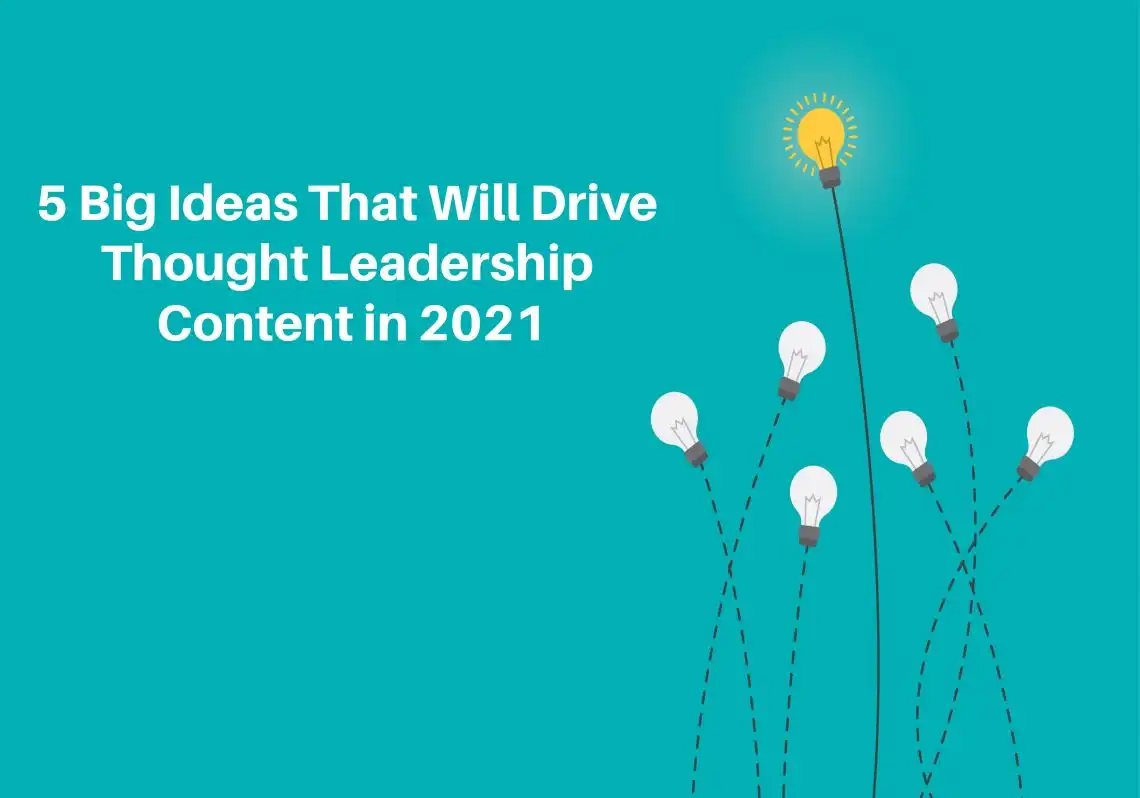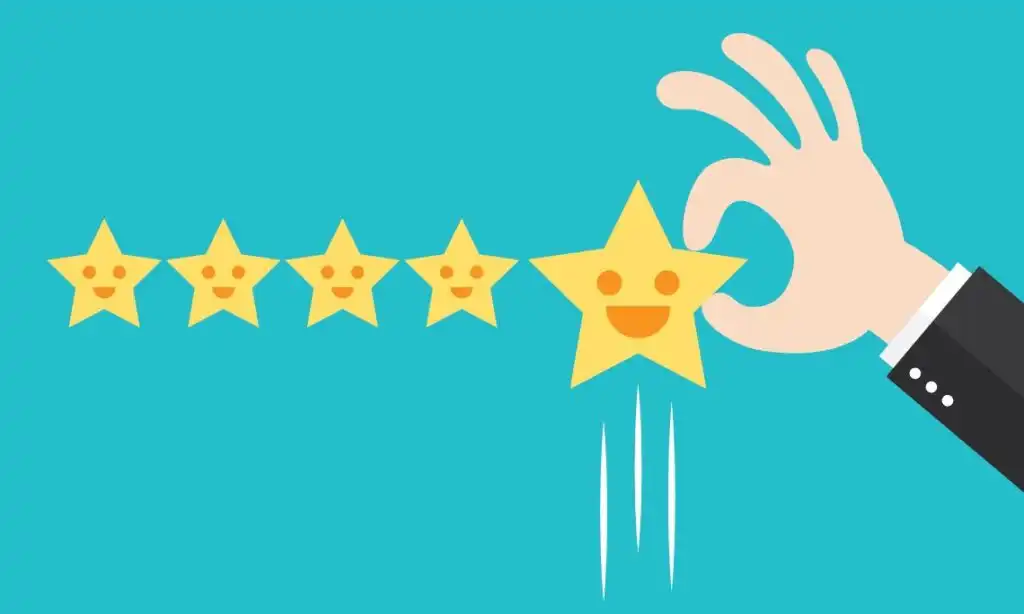
Year-Ender Series: 5 Thought Leadership Themes to Focus on in 2021
20 December 2020
Panchalee Thakur
Each year new ideas take shape and new thinking emerges. Opinion makers and thought leaders set the course for others to follow, opening people’s mind to new perspectives and ways of working. They help others to connect the dots and create a big picture of the direction the world is taking.
As we step into 2021, businesses will be looking for ways to recover from the crisis and rebound. Professionals will need a better understanding of the future of work and the skills they need to develop to fit in.
How can leaders use their knowledge and experience to help others make sense of our changed reality, and direct thoughts and actions? What are some themes that they must focus on to create thought leadership?
In this compilation, we pick five thought leadership themes for executives.
Thought Leadership Theme #1: Build Back Better
The world economy has got a battering. Factories have shut down and businesses are struggling to stay afloat because of lockdowns, movement restrictions and other measures to prevent the spread of COVID-19. The forecasts for economic recovery in 2021 differ. Economists are using different letters of the alphabet to label the path recovery will take. But whether the world gets back on its feet on a V or W-shaped trajectory or an L or K-shaped one, how will it make those gains? Will businesses go back to their old ways of being driven solely by profit with little care for the impact on the environment or the community around them? Or will they build back better?

Leaders are calling for organisations to ‘build back better’. We have heard such calls from the General Secretary of the United Nations, Antonio Guteres, and US president-elect Joe Biden, to many titans from the corporate world. The phrase, build back better, was first used in 2006 by former US president Bill Clinton who was appointed as a special envoy for tsunami recovery by the United Nations. It was adopted as a priority of the Sendai Framework for Disaster Risk Reduction 2015-2030.
Communication Opportunity for Business Leaders
- Lend your voice to the call for ‘build back better’. Show your commitment to sustainable business practices and community building. Consider contributing opinion pieces in the media, blogs or speaking opportunities.
- Leaders are using a number of global platforms for thought leadership on this theme. There is a special TED Series on it and the World Economic Forum’s WeForum is running a series on post-COVID recovery, The Great Reset.
Thought Leadership Theme #2: Employee Well-Being
This year has exposed our vulnerability to both physical and mental ailments, as the pandemic did not spare even the young and the healthy. It has taken a toll on people’s emotional health as they stayed confined to their homes. Many felt helpless as family and friends contracted the virus. Some have lost their jobs or livelihood in the economic fallout of COVID-19. Taking care of children and special needs family members while working from home led to employee burnout.

In 2021, we will see organisations put in better policies and measures for employee well-being. Think of access to telemedicine and teleconsulting, subscriptions to wellness programmes and more childcare benefits. In Deloitte’s Global Human Capital Trends survey this year, around 80 percent of respondents identified well-being as an important or very important priority for their organisation’s success.
Communication Opportunity for People Leaders
- Employees will expect HR leaders and business leaders to keep them motivated and engaged through the year as changes and uncertainties continue. Internal communication will need to step up to inform employees of policy changes and keep engagement level high even as they continue to work from home.
- It will be a good time to position your leaders in the media or in industry forums as corporate influencers. Pick topics such as employee-friendly policy-making, empathetic leadership or workplace culture of the future.
Thought Leadership Theme #3: Customer Experience
We may take Alexa’s help to know how to boil an egg. That is it seems one of the most frequently asked questions to digital voice assistants. But we still crave a human voice at the other end of the phone line. Studies have shown that consumers still prefer interacting with humans to chatbots.

In 2021, human emotions and values such as integrity, problem-solving, empathy and personalised attention will be essential while delivering customer experience, as per a report by KPMG. Brands will be doubling down on their efforts to create a great customer experience across channels in the new year. They will need to listen to what customers are saying on social media, and respond to feedback and queries fast. They will need to create a consistent brand voice across channels.
Communication Opportunity for Business and Marketing Leaders
- Organisations are looking for use cases and insights on how to redefine customer experience. Consider publishing articles and case studies that showcase your expertise and knowledge on the subject.
- The importance of social media to engage with your customer base will grow even further. Repurpose content for social media use including bite-sized slide decks, infographics and blogs. In this blog, we have recommended content formats that you must explore more in 2021.
Thought Leadership Theme 4: Digital Future
We have all seen the image of a mock poll that was circulating on social media a few months ago. The question asked: ‘Who led the digital transformation of your company?’ And the response was COVID-19. That encapsulates the importance of digital transformation today. From fish and meat stall owners in Singapore’s Tekka market to the kirana stores (mom and pop outlets) across India, there is a growing interest in incorporating digital technologies in business.
However, to the huge majority of business owners and executives, the term ‘digital transformation’ or ‘digital future’ is shrouded in a mystic haze. They will be looking for insights and recommendations on the business aspects of technology implementation such as artificial intelligence, data analytics, cloud computing or automation. In 2021, we will see a bigger interest in content that demystifies these technologies and brings out their business benefits. Professionals will be looking for advice and recommendations on new skills and mindsets to develop to stay relevant in the growing digital economy.
Communication Opportunity for Business and Technology Leaders
- Publish case studies that break down the problems that digital technologies are solving for your customers and the business benefits that they are deriving from that. Use different formats to reach out to a larger audience – a written case study, a video case study and infographics that capture the highlights.
- If you are a technology company, position your executives as thought leaders. Adopt an educative tone rather than marketing your own product or solution.
Thought Leadership Theme #5: Diversity and Inclusivity
Conversations around diversity and inclusivity have increased, and so have positive actions to remove biases and work towards greater equality. But a lot more needs to be done. Global research by McKinsey shows that despite efforts by companies, employees belonging to certain demographic groups are facing greater challenges during COVID-19 than others. For example, women are having to perform many roles at a time. They are discharging her professional and household responsibilities, besides ensuring that children are completing their online lessons. LGBTQ employees expressed greater fear of losing ground and being isolated.
In 2021, employees will expect their employer to do more on workplace diversity and inclusivity. The same report said nine out of 10 employees globally believe companies should engage in diversity and inclusion initiatives.
Communication Opportunity for Business and People Leaders
- Take your internal communications to the next level. Listen to your employees across diverse groups and structure your communication to meet their expectations and address their fears and concerns.
- Share your experiences and learnings in implementing policies and programmes around diversity and inclusivity for the larger audience. Use your company’s blog, social media and people-focussed publications and industry forums to spread the word.
Creating thought leadership for your executives takes time and planning. Identify leaders in the organisation whose depth of knowledge you can tap to create valuable content and pick the content format and channel you want to explore. Partner with a content writing agency with experience in creating thought leadership content to work with you.
Want to know more about our expertise in creating thought leadership for CXOs? Check out our article and blog writing services.
